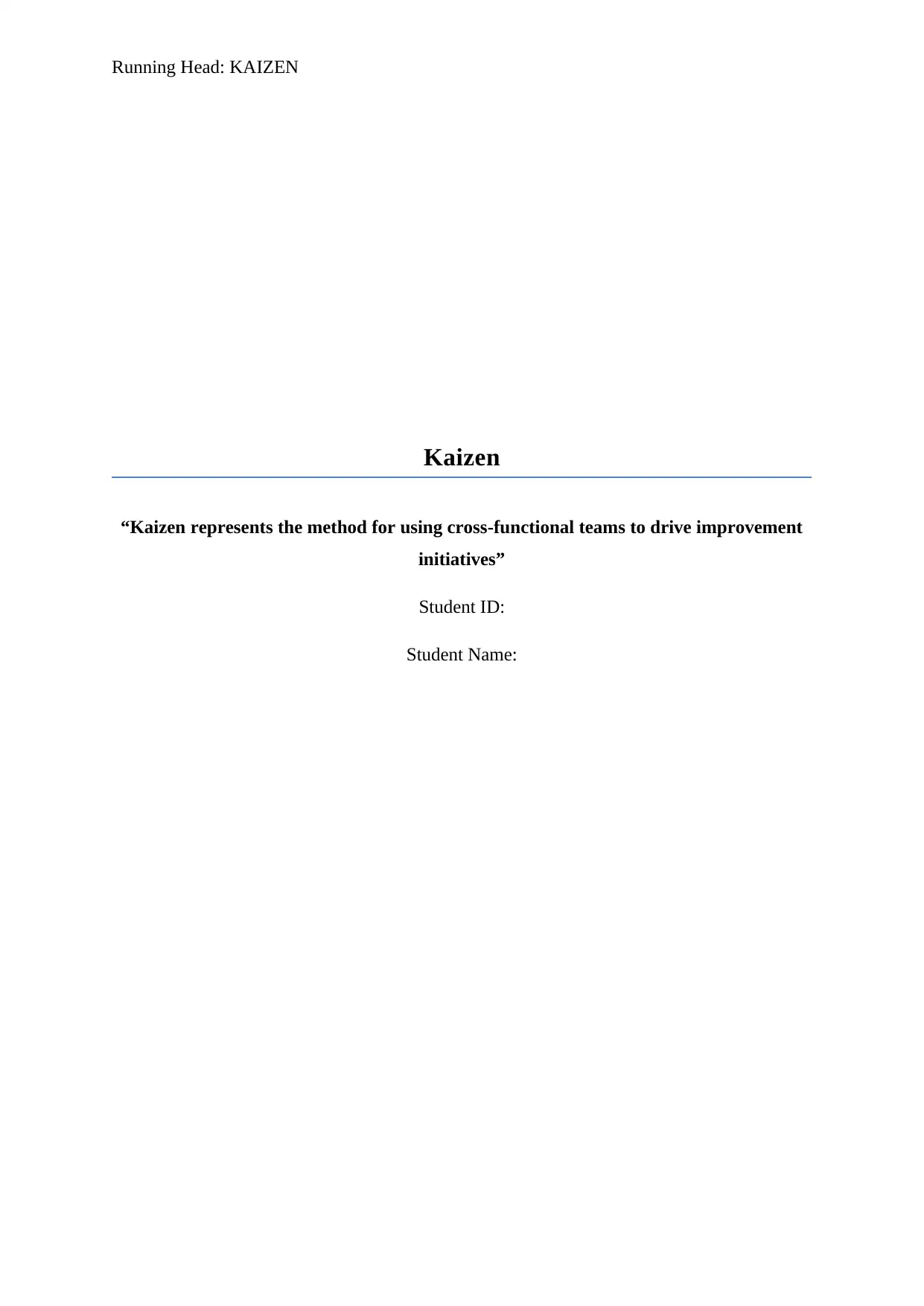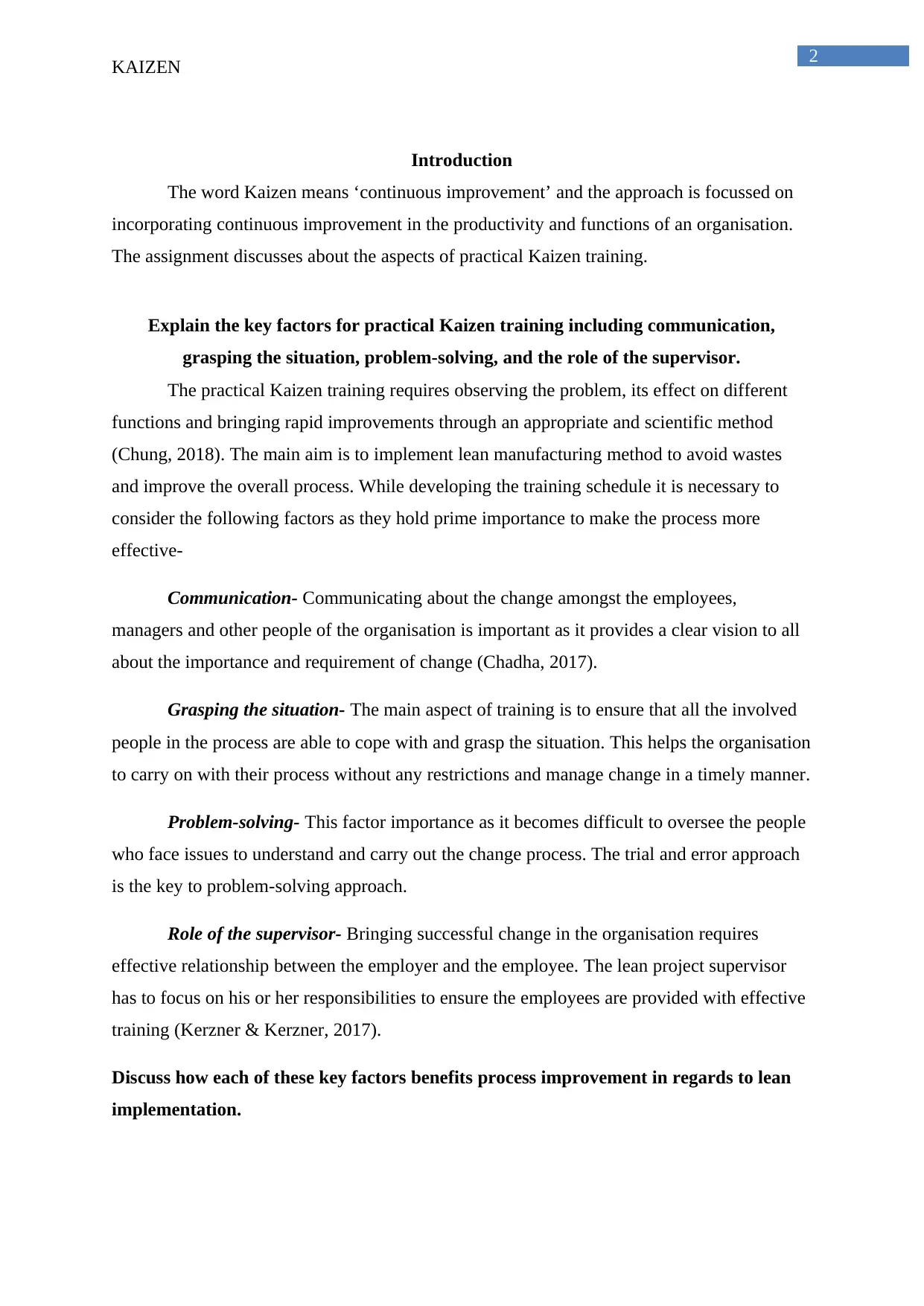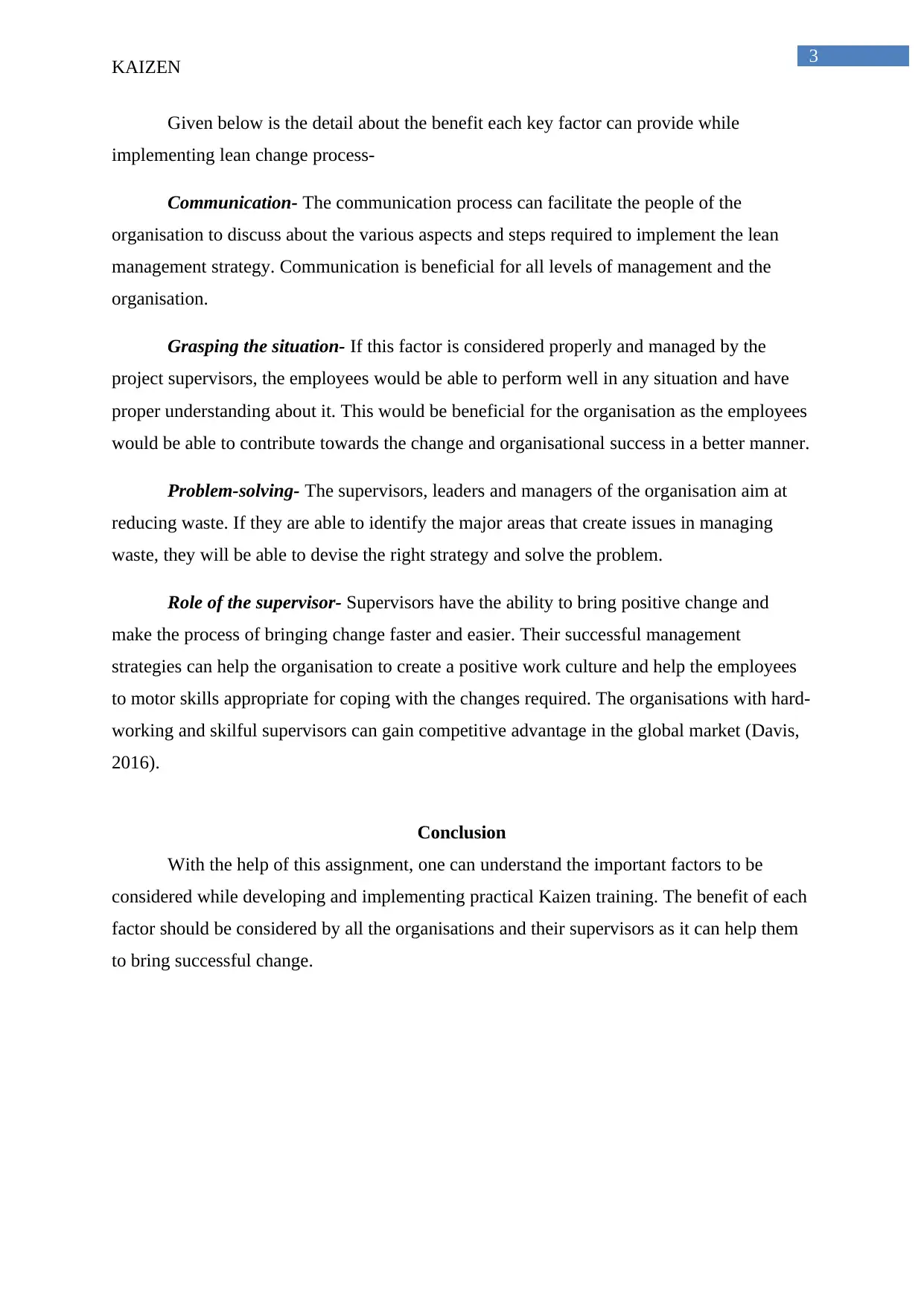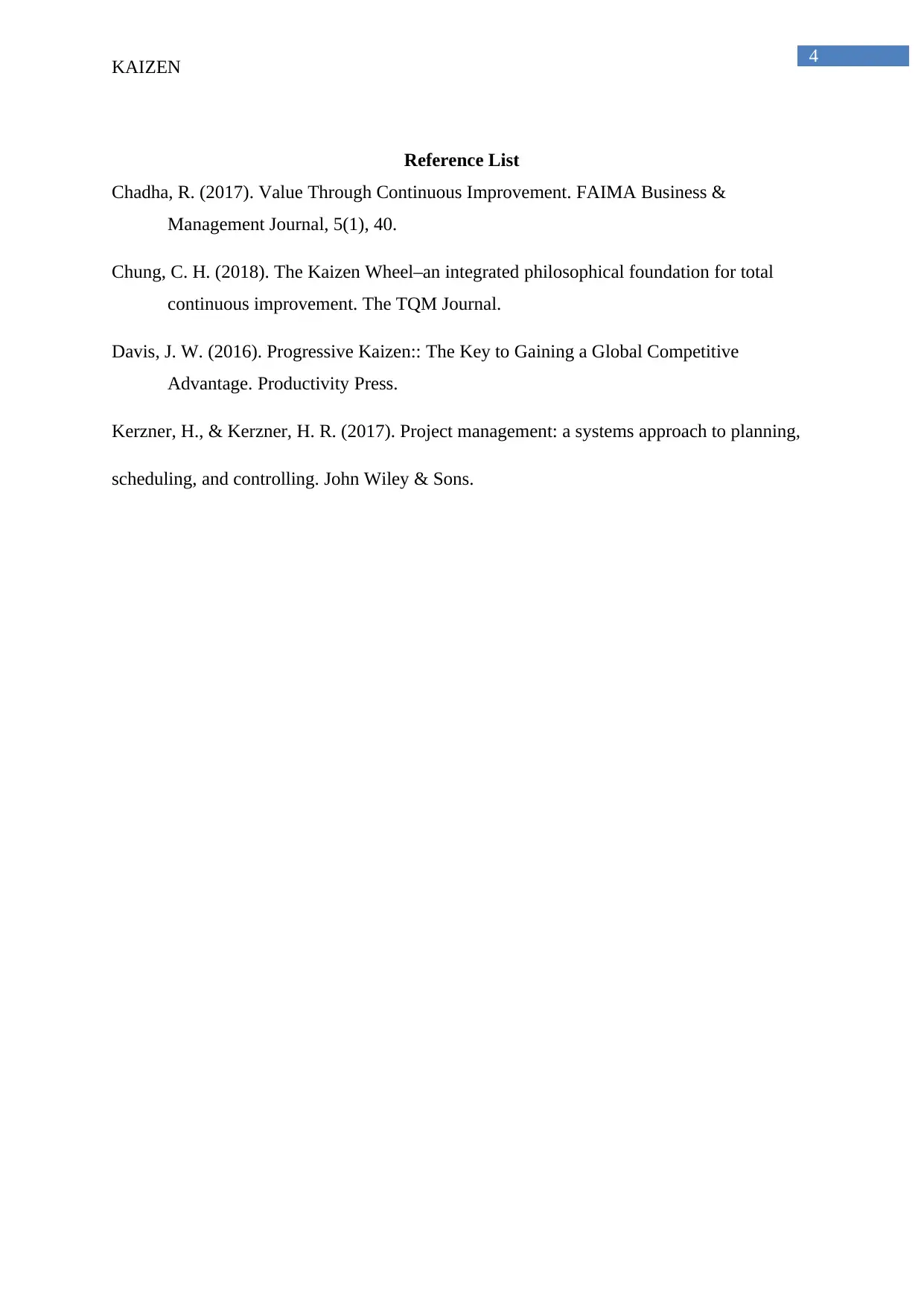Kaizen Training: Key Factors, Benefits, and Lean Implementation
VerifiedAdded on 2023/06/05
|5
|784
|251
Essay
AI Summary
This essay explores the critical components of practical Kaizen training, emphasizing the significance of communication, situation awareness, problem-solving skills, and the pivotal role of supervisors in driving continuous improvement within an organization. It highlights how effective communication ensures a shared understanding of the need for change, while grasping the situation enables employees to adapt and manage transitions effectively. The problem-solving approach, utilizing trial and error, is essential for overcoming challenges during implementation. Furthermore, the supervisor's role is crucial in providing effective training and fostering a positive work culture that supports change. The essay also details the benefits of each key factor in facilitating lean implementation, such as enhanced communication for strategic discussions, improved situation awareness for better employee contributions, problem-solving for waste reduction, and effective supervision for skill development and competitive advantage. Ultimately, the essay underscores the importance of these factors for organizations seeking to implement successful Kaizen training programs and achieve continuous improvement.
1 out of 5











![[object Object]](/_next/static/media/star-bottom.7253800d.svg)